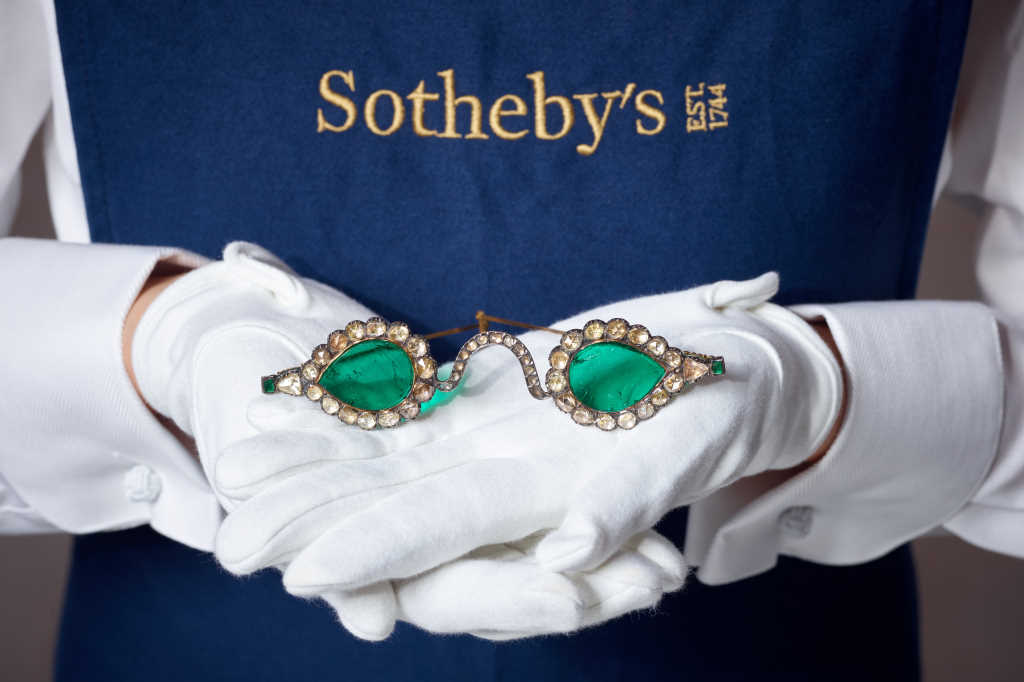Emerald eyes – nobody buys
Two pairs of extraordinary spectacles with diamond and emerald lenses, once owned by an unknown Mughal prince in South Asia, failed to find a buyer at Sotheby’s October 2021 auction.
Sotheby's had expected the emerald-lensed 'Gate of Paradise' and the diamond-lensed 'Halo of Light' specs to sell for £1.5m-2.5m apiece (a combined value of NZ$5.9m-9.8m) at its Arts of the Islamic World & India sale.
Sotheby's statement said that the pieces drew much attention when exhibited in New York, Hong Kong and London. “Anyone who has laid eyes on them is in no doubt that they are indeed something very special, and we have every faith that the huge interest we have seen will translate into a different result later down the line.”
The glasses are believed to have been made somewhere within a 150-year period encompassing the reigns of emperors Akbar (1556-1605), Jahangir (1605-1627), Shah Jahan (1627-1658) and Aurangzeb (1658-1707). In 17th century Mughal India, imperial wealth, scientific knowledge and artistic endeavour all simultaneously reached their peak, said Edward Gibbs, chair of Sotheby’s Middle East and India division. “Commissioned by an unknown prince, an artist shaped a diamond weighing over two hundred carats and a brilliant emerald weighing at least three hundred carats into two masterpieces. Testament to the technical skill involved, no comparable example of either is known to exist.”
“While ordinary lenses improve sight, these were aids for spiritual enlightenment – with diamonds thought to illuminate and emeralds believed to have held miraculous powers to heal and to ward off evil,” said Gibbs. “The most famous evocation of such glasses can be found in Pliny the Elder’s Natural History, a tome that recounts Emperor Nero observing gladiatorial contests through a precious green stone. Nero’s tutor, Seneca, was an expert in light refraction, mirrors and optics, and these were thought to be the first spectacles.”
Around 1890, the lenses of these Mughal specs were placed in their current frames, decorated with rose-cut diamonds, he said.


























